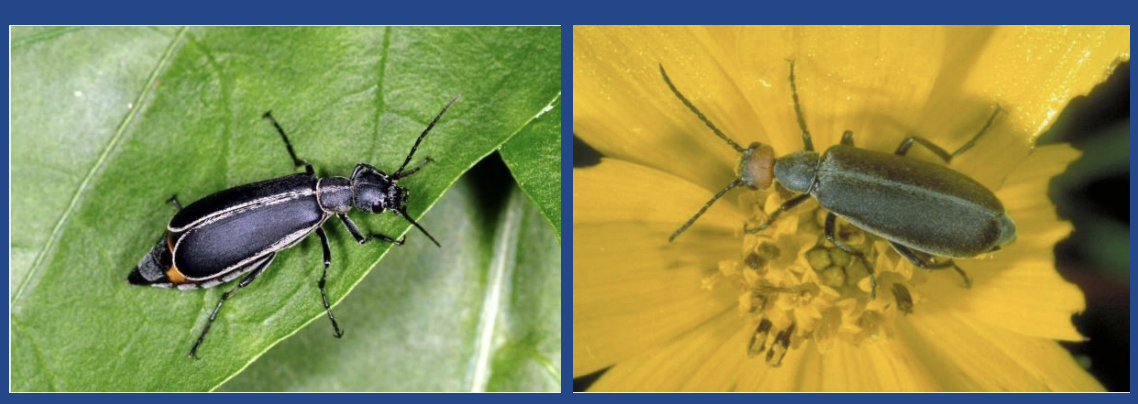Watch for Blister Beetles in Hay

Blister beetles are sometimes found in mid-summer cuttings of alfalfa hay and can be toxic if consumed by livestock, especially horses. As few as five to 10 of these beetles can be fatal to horses when ingested because of the cantharidin in their hemolymph (insect blood).
Management to minimize blister beetle problems in alfalfa:
- Cut alfalfa at 10% or less bloom
- Manage weeds in and around fields, especially pastures
- Consider cropping practices adjacent to alfalfa. Blister beetles can be abundant in soybeans but are usually absent in corn.
- Do not grow solanaceous crops near alfalfa – both black and stripped blister beetles can be abundant in tomatoes and potatoes
- Sample field margins before cutting – blister beetles usually come from field margins and do not tend to move too far beyond the edges of alfalfa fields
- Monitor pastures for grasshoppers. Several blister beetle species develop in grasshopper egg pods. A high grasshopper population can produce high blister beetle numbers the following year.
Ric Bessin, PhD, extension professor, and Lee Townsend, PhD, emeritus extension professor, both from the Department of Entomology, provided this information. Excerpted from Kentucky Pest News.
Source: July 31, 2020, Kentucky Forage News.
